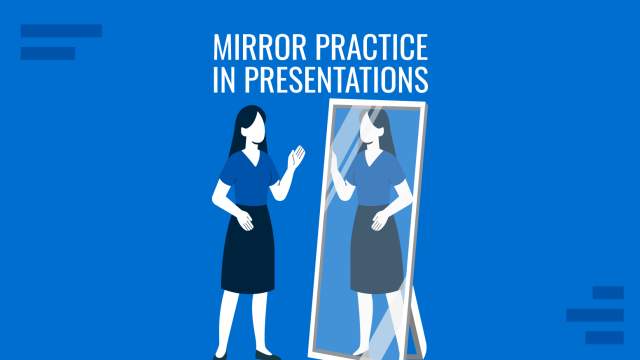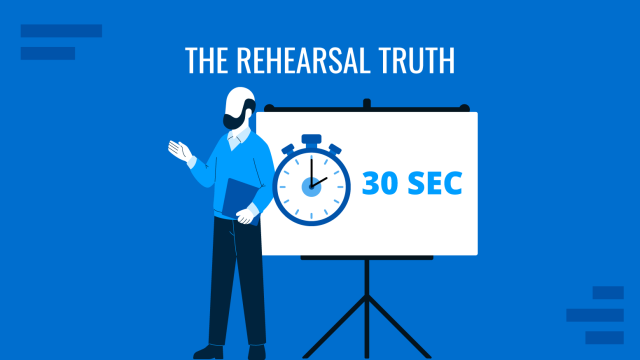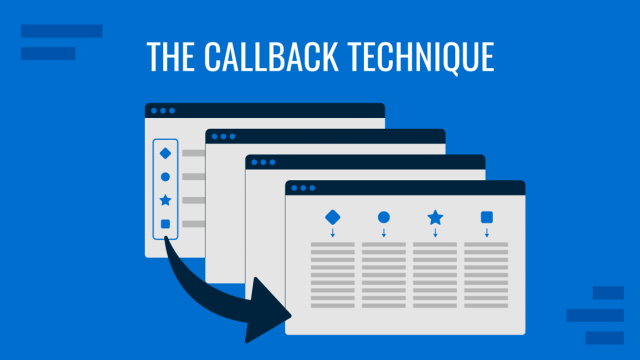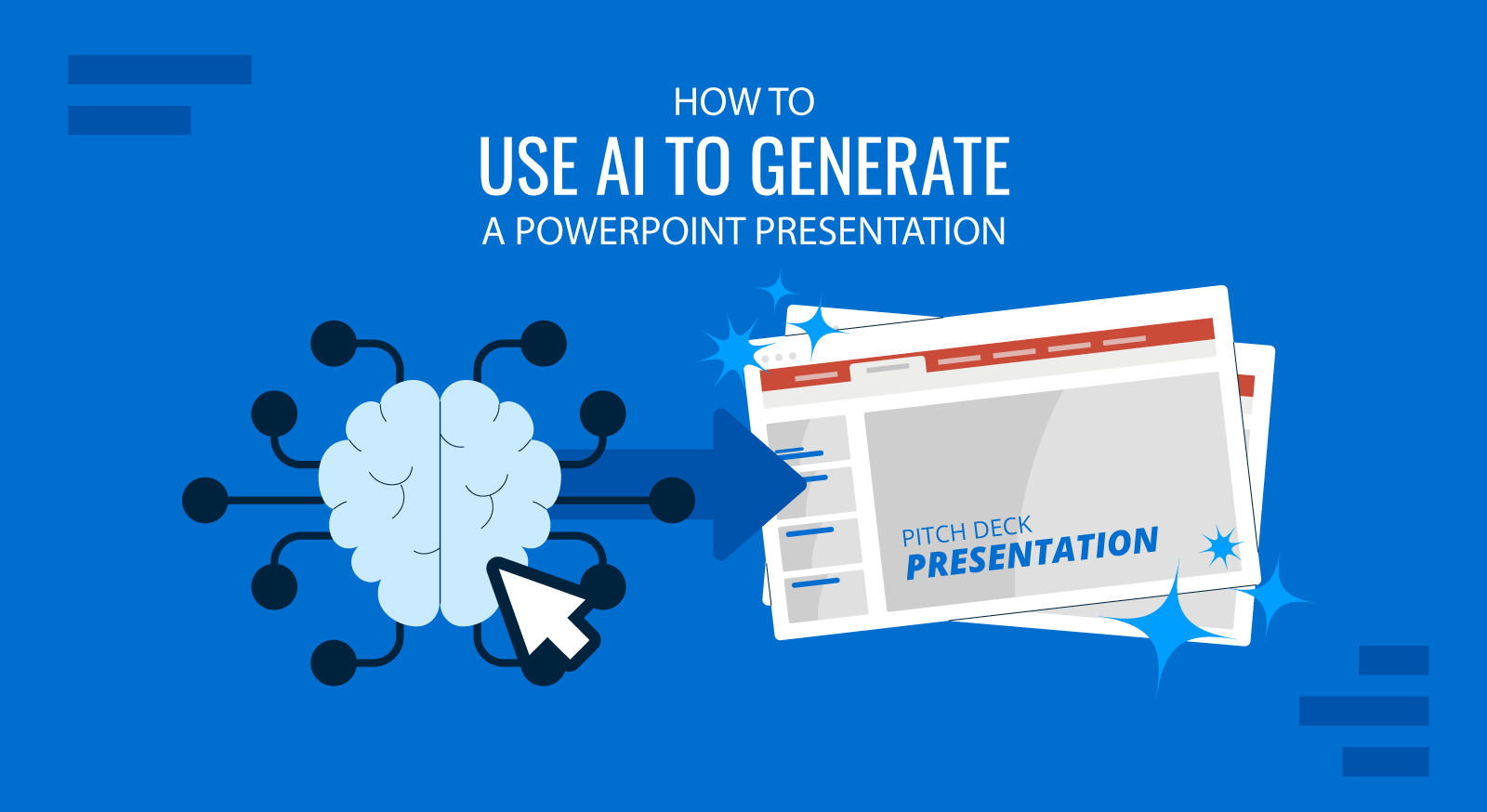
Creating a PowerPoint presentation can be time-consuming and requires both content development and design expertise. AI-powered tools transform how presentations are made, helping professionals, educators, and students save time and improve slide quality.
AI can be a good ally by assisting in structuring content, generating slide layouts, and even automating design elements, allowing users to focus on final touches or delivering their message rather than struggling with formatting.
In this article, we’ll explore how to use AI to generate a PowerPoint presentation, covering AI tools available, including SlideModel AI, Microsoft Copilot, ChatGPT, and Claude. We’ll also outline step-by-step methods for creating AI-powered presentations and discuss best practices for refining AI-generated slides.
Why Use AI for PowerPoint Presentations?
Do you remember when VAs (virtual assistants) were in high demand as professionals required help with common-day tasks? Well, we can use that same analogy to describe the role that AI plays today in terms of becoming tools that speed up our work. For instance, AI reduces the need to hire extra personnel for tasks like generating graphics for our presentations; it can coach us in the rehearsal stage to see where we stand if we struggle with public speaking, plan the structure of our presentation, suggest content ideas, and so many more applications.
In general, AI-powered presentation tools offer multiple advantages:
- Save Time & Effort: AI can generate slide content and layouts within seconds, reducing manual workload.
- Ensure Professional Designs: AI tools leverage design best practices to create engaging visuals.
- Enhance Productivity: AI helps users quickly structure presentations, ensuring a smooth workflow.
- Adapt to Different Use Cases: AI-generated slides work for business, education, marketing, and other industries.
AI can help to make your presentation creation process more efficient, from business pitch decks to training sessions and academic reports.
AI Tools for Creating PowerPoint Presentations
Multiple AI-powered tools can help generate PowerPoint slides. Essentially, these tools allow you to instruct AI to create a PowerPoint presentation for you. While you can always follow the structured process of building a presentation, below we explore how some presentation tools work and when to use them.
1. SlideModel AI – AI-Powered Presentation Generation
SlideModel AI is an AI-powered presentation maker that allows users to quickly generate professional slides. It is one of the available AI tools used now to create engaging PowerPoint slides out of pure text.
Key Features:
- Generates editable PowerPoint slides based on AI input.
- Provides high-quality, visually appealing designs (not just text-based slides).
- Also generates the image assets for your slides (with DALL-E, Stable Diffusion and Flux)
- Offers 100% customizable templates for different presentation types.
- Works seamlessly with PowerPoint and Google Slides.
How to Use SlideModel AI:
Upgrade your SlideModel plan to one supporting AI PowerPoint generator (e.g., the Annual Unlimited plan).
Then, get access to SlideModel AI on your account (you can visit it under the My Account -> Tools page). Then, open the SlideModel AI editor in your browser and click on the button to create a new presentation with AI.
Here, you can enter a prompt with your presentation topic.
SlideModel AI will suggest an outline of the presentation. Here, you can refine the results and move the topics up and down, depending on your specific needs. You can also remove or add other topics if needed. These items in your structure will be mapped directly with the slides in your final presentation.
Click Next to generate the presentation with AI. Finally, go slide by slide and review the generated presentation. You can edit text placeholders or change the images (with your images, or using the AI-powered image generated that is built-in SlideModel AI).
Finally, download the PowerPoint presentation (.pptx format) or open it in Google Slides. From here, you can present the slideshow or apply the final touches and edit it.
Best for: Business professionals, educators, students, and anyone needing quick, editable AI-generated slides.
2. Microsoft Copilot in PowerPoint
Copilot in Microsoft 365 is an AI assistant within PowerPoint that helps users create and enhance presentations. If you are already a PowerPoint user, you will be eligible to purchase the Copilot add-on directly from Microsoft.
As soon as you upgrade PowerPoint with Copilot capabilities, you can use it to assist you in creating a presentation.
Key Features:
- Generates slide content based on simple text prompts.
- Suggests slide layouts, text summaries, and design refinements.
- Works with existing presentations to improve clarity and structure.
How to Use Copilot in PowerPoint:
Open PowerPoint and activate Copilot.
Enter a command (e.g., “Create a 10-slide marketing strategy presentation”).
Copilot generates slides with structured content and design suggestions.
Refine and customize the slides as needed.
Best for: Business professionals, project managers, and teams using Microsoft 365 for presentations.
3. ChatGPT
ChatGPT is one of the most popular LLMs (Large Language Models) known to date. It works as a text-based AI assistant to help create structured presentation outlines and speaker notes, among other elements such as graphics, detailed explanations, calculations, etc. Check our article on ChatGPT for presentations to learn more about its endless possibilities.
Key Features:
- Generates presentation structure and talking points.
- Suggests bullet points and summaries for slides.
- Works well for brainstorming ideas before designing slides.
How to Use ChatGPT for PowerPoint:
Prompt AI with your topic (e.g., “Create an outline for a digital marketing presentation”).
AI provides structured content (slide-by-slide breakdown).
Copy the text into PowerPoint and use SlideModel’s editable templates to enhance the design.
Best for: Students, researchers, and professionals who need structured content before designing slides.
4. Claude
Claude, developed by Anthropic, offers a powerful tool for structuring IT presentations by leveraging its natural language processing capabilities. It excels at organizing complex technical concepts into clear, concise narratives, making it ideal for IT professionals aiming to communicate effectively. Unlike traditional methods, Claude can generate structured outlines, suggest logical flow, and refine content to suit technical audiences, saving time and enhancing clarity. Its advantages include rapid content generation, adaptability to specific IT topics like cybersecurity or software development, and the ability to distill jargon-heavy information into digestible insights. This ensures presentations resonate with both experts and stakeholders.
Key Features:
- Structured outline generation
- Technical content simplification
- Customizable for IT-specific topics
How to Use Claude with PowerPoint:
Input IT topics into Claude for slide outlines
Export text to PowerPoint
Refine slides with visuals
Best for: IT project pitches, Technical training sessions, Stakeholder briefings
Step-by-Step Guide: How to Create a PowerPoint Presentation with Copilot
Microsoft 365 Copilot is available as an add-on to Microsoft 365. When you enable Copilot in PowerPoint, it acts as a partner to help you create a polished first draft in minutes while keeping you in control of the creative process.
Step 1: Define Your Topic & Purpose
Before using AI, determine:
- The goal of your presentation (e.g., educating, pitching, reporting).
- Your target audience (e.g., clients, students, investors).
Example prompt:
“Create a 10-slide presentation on how AI is transforming business operations.”
Step 2: Generate an Outline with AI (ChatGPT, Claude, or Copilot)
Generating an outline with AI tools like ChatGPT, Claude, or Copilot is a straightforward process that can save time and spark creativity. First, choose your preferred AI tool based on accessibility or familiarity—each offers unique strengths, like ChatGPT’s conversational depth or Claude’s structured reasoning. Next, craft a clear prompt to guide the AI. For example, say, “Create a detailed outline for a 1000-word article on renewable energy trends.” Specificity helps; include details like word count, topic, or audience to refine the output.
Once you submit the prompt, the AI will generate a response, typically in seconds. Expect a numbered or bulleted list with sections like an introduction, key points, and conclusion. Review the outline for coherence and relevance—AI might occasionally stray off-topic or overgeneralize. If needed, tweak the prompt (e.g., “Add subpoints on solar innovations”) and regenerate. You can also ask follow-up questions like, “Expand section two with examples” to flesh it out.
Finally, copy the outline into your writing tool and adapt it as you go. AI outlines are flexible starting points, not rigid templates. With practice, you’ll master prompting to get tailored, efficient results every time.
For more detailed guidance on crafting effective prompts for ChatGPT to enhance your presentation design, refer to our comprehensive guide on ChatGPT prompts for presentations.?
Use the best structure for your presentation style (e.g., problem-solution approach).
Example AI-generated outline:
- Introduction to AI in Business
- Key AI Applications in Business
- Case Study 1: AI in Marketing
- Case Study 2: AI in Finance
- The Future of AI in Business
- Conclusion
Step 3: Create the Slides Automatically with AI
Creating slides automatically with AI is a game-changer for anyone looking to craft presentations quickly and efficiently. Tools like SlideModel AI and Microsoft Copilot speed up the process, blending automation with customization to produce polished results.
With SlideModel AI, you can generate an editable slide deck in minutes. Start by inputting your content or topic, and the AI will create a set of slides tailored to your needs. These slides are fully editable, allowing you to tweak text, visuals, or layouts to match your vision. It’s ideal for those who want a head start without building from scratch. You can customize them directly in their web-based app or export the presentation to PowerPoint or Google Slides for advanced customization.
Another option is to use Microsoft Copilot, which enhances this process by formatting raw text into professional PowerPoint layouts. Simply provide a block of text—say, an outline or notes—and Copilot organizes it into slides with coherent structure, adding titles, bullet points, and even suggesting visuals. It’s like having an assistant who instantly turns ideas into presentable content.
Finally, there’s a third route, which is using SlideModel’s pre-designed templates. With a single click, these professionally crafted designs let you apply consistent styles, colors, and themes. All you need to do is extract the content from your AI tool and populate it inside your presentation templates. All design decisions are made for you by a team of professional designers.
Step 4: Refine & Customize the Presentation
With the current state-of-the-art for AI presentations, we cannot expect everything to look polished, even when AI text-to-image generators are continuously evolving.
AI-generated slides often need final touches:
- Adjust fonts, colors, and images to match your branding.
- Add relevant visuals (charts, infographics, or AI-generated graphics).
- Ensure clarity & consistency (avoid AI-generated redundancy).
In short, it’s about “humanizing” the slides so they don’t look dull or robotic. It’s about giving them your personal touch, a process that can take half an hour at most.
Step 5: Review & Finalize
Once the entire deck is completed and customized, it’s a good practice to check for the following elements:
- Accuracy (fact-check AI-generated data).
- Readability (keep text minimal and impactful).
- Engagement (add transitions, animations).
Fact-checking AI-generated data is critical. LLM models have a common vice: making up information to satisfy the user. This can be prevented by asking the AI tool of your choice to give the references for the information it’s currently using (links, book citations, etc.). Always double-check links or book ISBNs, as well as article references. You’d be surprised at how deceptive AI tools can be on this behalf.
Readability is as easy to check as conciseness regarding written content for your slides, using the appropriate font size and text/background contrast. Our guide on the 10/20/30 rule of PowerPoint presentations has key insights on this behalf.
Pro Tip: Ask AI to simplify or summarize complex slides for better comprehension. If you don’t know how to apply this technique, check our article on the Feynman technique.
Who Can Benefit from AI-Generated Presentations?
AI-generated presentations are versatile tools that benefit a wide range of users by simplifying the creation process and enhancing output quality. Business professionals can leverage AI to craft investor pitches, reports, and proposals effortlessly. With tools like SlideModel AI or Copilot, they can transform data into compelling visuals, saving time and impressing stakeholders.
Educators and trainers also gain significantly. AI automates the production of lecture slides and e-learning content, turning lesson plans into engaging, structured presentations. This efficiency lets them focus on teaching rather than formatting. Similarly, students and researchers save hours on academic presentations. They get polished slides for seminars or thesis defenses by inputting research notes and achieving tight deadlines.
Marketing and sales teams thrive with AI-powered sales decks. AI generates persuasive, visually appealing slides from product details or campaign ideas, helping close deals faster. Entrepreneurs and startups, often pressed for time and resources, benefit by quickly creating business pitch decks. AI turns rough concepts into professional presentations, leveling the playing field for pitching to investors or partners.
Across these groups, AI eliminates repetitive tasks, boosts creativity, and delivers consistent quality, making it a valuable ally for anyone presenting ideas effectively.
Explore Business PowerPoint Templates for editable slides that complement AI-generated content.
Best Practices for Using AI in PowerPoint Presentations
Using AI in PowerPoint presentations can elevate your work, but following best practices ensures optimal results. Start by combining AI-generated text with SlideModel’s templates for a professional design. Tools like Copilot or SlideModel AI can produce content quickly, and pairing it with pre-designed templates adds polish and structure without extra effort.
Customize AI-generated slides for brand consistency. Adjust colors, fonts, and logos to align with your organization’s identity. AI might not inherently grasp your branding, so this step ensures a cohesive look. Another key practice is using AI to summarize long content, such as condensing a report into key points. However, always edit the output for clarity, as AI can sometimes oversimplify or miss nuances.
Finally, don’t entirely rely on AI. While it’s a powerful starting point, AI-generated slides may lack context or finesse. Refine them by tweaking wording, rearranging layouts, or adding personal insights to suit your audience. This human touch ensures the presentation feels authentic and engaging. By blending AI efficiency with manual oversight, you’ll create PowerPoint decks that are both time-saving and impactful, striking the right balance between automation and creativity.
Tips & Hacks
Repurpose Existing Content
Got a lengthy report, research paper or blog post? AI can transform it into presentation-ready material. Upload the text to a tool like Claude or Copilot and say, “Summarize this 10-page report into 6 key points for a slide.” The AI will distill the essence, but don’t stop there—edit for punchy phrasing and clarity, then drop the points into a sleek SlideModel template. This hack turns dense material into concise, visually appealing slides in minutes.
Generate Content for Slides
How often have you been unsure how to customize a PowerPoint template? Well, thankfully, we’ve tested a technique that feeds ChatGPT with a picture of your slide and asks in a detailed prompt, mentioning your use scenario, to give you the placeholders to populate that specific PPT template. You’d be surprised at how effective this technique can be, although it requires several iterations to reach the final result in some cases.
Altering Graphs
Similar to the previous scenario, you can ask ChatGPT to give you EXACTLY what you need to change to customize a graph or a chart in a presentation template based on YOUR data—not a simple placeholder. It’s easy, it gives you a detailed explanation, and you can follow the step-by-step process. Furthermore, you can ask ChatGPT to analyze a specific slide design (after taking a screenshot or photo from a real presentation), or an existing infographic online, and ask it how would you use in your specific context.
Use AI to Make Graphics for PowerPoint
Aside from making an entire presentation, you can use AI to make graphics for PowerPoint slides. ChatGPT can be a great companion when you require to make graphics for presentations. It can help you creating a diagram, infographic or even icons for presentations. In the following example, we used ChatGPT to generate a visualization of a design that depicts different types of cloud accesses. With the current technology, we can ask ChatGPT to extract the icons generated and place them over a white background, which will help to grab the graphics for a PowerPoint presentation.
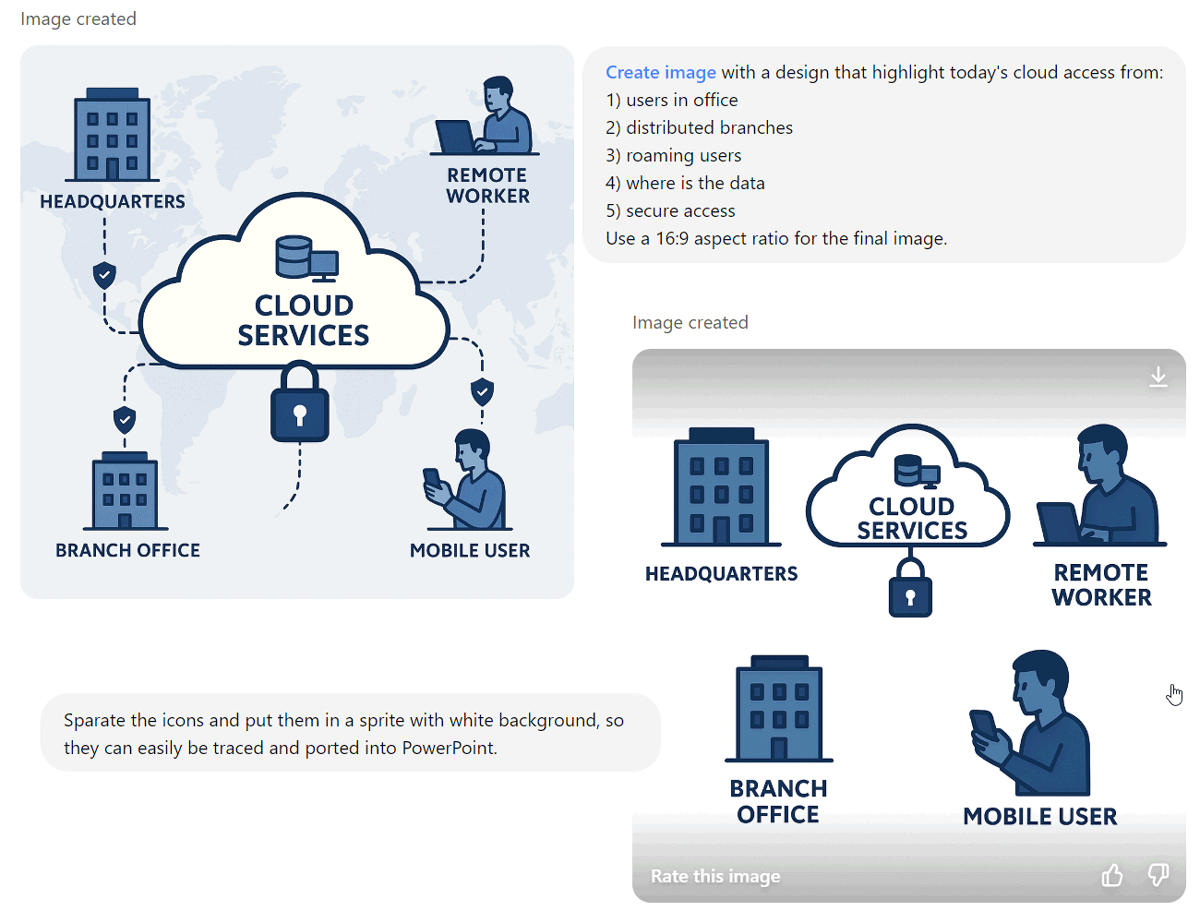
Batch Generate Visual Ideas for Impact
Don’t settle for generic slides—use AI to brainstorm visuals that pop. Try prompting, “Suggest 5 creative ways to visualize customer growth data for a sales deck.” You might get ideas like a timeline, a bar chart with icons, or a heatmap.
Take these concepts to SlideModel’s templates or Copilot’s design tools to quickly craft professional, attention-grabbing slides without needing graphic design skills.
AI as a Game-Changer in Presentation Design
AI is revolutionizing the presentation creation, saving time, enhancing design, and improving efficiency. Whether using SlideModel AI, Copilot, ChatGPT, or any other AI-powered presentation tools, they make it easier to generate slides in less time.
Ready to create your AI-powered presentation? Try SlideModel AI today and design stunning slide!
